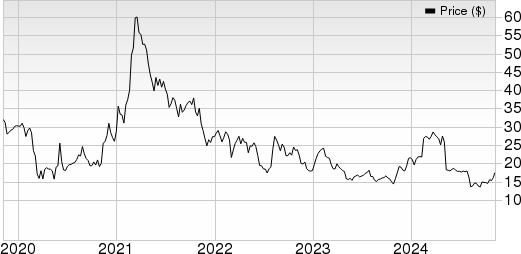The S&P 500 (SNPINDEX: ^GSPC) has soared this year, and that’s terrific news. Investors, watching the index advance last year, were hoping for one thing: the arrival of a new bull market. The index confirmed its presence in bull territory when it reached a record high in January.
Then it went on to reach multiple record highs, and today it’s heading for a 21% gain since the start of the year.
But one downside of all this momentum is the increase in valuations. Today, the valuations of many S&P 500 stocks have soared, reaching levels that make them — and the market as a whole — look downright expensive. And that might prompt you to wonder whether you should really buy stocks right now. Before making any decisions, though, let’s turn to history for some insight about what the market may do next.

Image source: Getty Images.
Why stocks have gained
First, let’s talk about why stocks have advanced so much this year. And here, we’ll find two main drivers. After a long series of interest rate hikes over the past two years to tame runaway inflation, investors, anticipating an end to high interest rates, piled into stocks.
They were rewarded when the Federal Reserve recently cut rates by 50 basis points — a more aggressive move than expected; most forecasts were for a decrease of 25 basis points.
Lower rates result in more spending power for consumers since the rates they pay for loans and credit card balances, for example, decrease. And lower rates also ease the financial burden of companies relying on debt to grow. All of this generally helps boost corporate earnings over time.
The artificial intelligence (AI) boom was the second factor to push markets higher, as investors flocked to companies that develop AI products and services as well as companies using AI to improve their businesses. This has helped AI chip designer Nvidia and other technology players like Meta Platforms and Amazon to advance. With the AI market forecast to grow from $200 billion today to $1 trillion by the end of the decade, these companies may greatly benefit.
While these particular players remain reasonably priced considering their outlooks, some companies’ valuations have reached high levels. This is reflected in one particular measure that looks at inflation-adjusted earnings over 10 years in relation to stock price. I’m talking about the S&P 500 Shiller CAPE ratio.
The CAPE ratio and index performance
This metric has surpassed the level of 35, and it’s only done this on two other occasions since the launch of the S&P as a 500-company index in the late 1950s. Now let’s consider what the S&P 500 has done in the past following spikes in the CAPE ratio. Over the past 24 years, spikes in the ratio always have been followed by eventual declines in stocks’ valuations — and declines in the index.
S&P 500 Shiller CAPE ratio data by YCharts.
So, the next move for the S&P 500 could be a decline, if history is a guide. But before you run out and sell stocks or decide to stop investing, consider the following two points. First, we don’t know exactly when a drop will come. It may be soon or at some farther-off moment. So, if you avoid stocks now, you may miss out on significant gains.
Second, as we also can see through the CAPE ratio and S&P 500 performance over time, indexes always have recovered from declines — and lower valuations have moved higher. This means that even if you’re fully invested through one of the low points, if you hold on for the long term, you’re likely to win. In investing, time is always on your side.
What does this mean for you as an investor today, in a market where stocks are looking pricey? It’s important to hold on to quality stocks with solid long-term prospects and take the opportunity to scour the market for buying opportunities. Just because some stocks are expensive doesn’t mean all bargains have disappeared.
And even in times when the market looks cheap, you’ll still find some stocks overpriced. If you always consider stocks on a case-by-case basis, you’re likely to find potential winners trading for reasonable prices during any market environment — even when the S&P 500 Shiller CAPE ratio is soaring.
Should you invest $1,000 in S&P 500 Index right now?
Before you buy stock in S&P 500 Index, consider this:
The Motley Fool Stock Advisor analyst team just identified what they believe are the 10 best stocks for investors to buy now… and S&P 500 Index wasn’t one of them. The 10 stocks that made the cut could produce monster returns in the coming years.
Consider when Nvidia made this list on April 15, 2005… if you invested $1,000 at the time of our recommendation, you’d have $829,746!*
Stock Advisor provides investors with an easy-to-follow blueprint for success, including guidance on building a portfolio, regular updates from analysts, and two new stock picks each month. The Stock Advisor service has more than quadrupled the return of S&P 500 since 2002*.
*Stock Advisor returns as of October 28, 2024
John Mackey, former CEO of Whole Foods Market, an Amazon subsidiary, is a member of The Motley Fool’s board of directors. Randi Zuckerberg, a former director of market development and spokeswoman for Facebook and sister to Meta Platforms CEO Mark Zuckerberg, is a member of The Motley Fool’s board of directors. Adria Cimino has positions in Amazon. The Motley Fool has positions in and recommends Amazon, Meta Platforms, and Nvidia. The Motley Fool has a disclosure policy.





